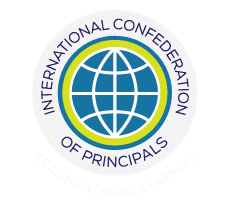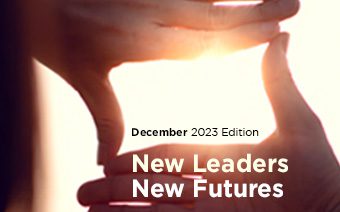For Principals and Administrators: A Practical Planning Protocol for Students With Multiple Disabilities in Regular School Settings
Dr Michael Steer & Mr John E. Annison, Australia
ABOUT THE AUTHORS
Dr Michael Steer, Royal Institute for Deaf & Blind Children, Private Bag 29, Parramatta, New South Wales 2124, Australia. Email: rcms@CC.newcastle.edu.au.
Mr John E Annison, Institute of Disability Studies, Deakin University, 221 Burwood Highway, Burwood, Victoria 3125, Australia.
During much of the present century in Australia, as in almost all nations in the ‘western’ or ‘developed’ world, few children and adults with multiple disabilities (with two or more disabilities in the areas of vision, hearing, physical ability, intellect and behaviour), received any kind of sustained education and training.
Provision of ‘Care’ Only
Since the provision of ‘care’ was the essence of the community’s expectation of their developmental program requirements, these children were generally kept either at home or placed in settings beyond the responsibility of our generic public and private school systems. A large number were widely believed to be ‘trainable’ rather than educable.
Less than a decade or so ago, few administrators and staff in the human service systems of many developed countries, for example, in their schools, hospitals, in-home care services, community residential systems and the generally wide array of vocational programs, were concerned with the needs of people so designated. Indeed, the term ‘multiple disability’ itself would probably not have been widely recognised outside specialised community service agencies and special school circles.
Times have changed. Today children and adults so defined are generally, throughout the developed world, at the centre of what might well be the most exciting and challenging developments in educational programming. In 1999 the compass needle of change has swung the human service professional’s position to the opposite pole.
All People are Able to Learn
A dramatically different philosophy now prevails. Most, if not all educators, now believe that all people are able to learn, and that even those with the most pervasive disabilities can, and do, learn. As a consequence, it is becoming increasingly likely that at some point in his or her career, every professional educator will encounter a person with one or other sort of disability. With increasing frequency, they could become responsible for the planning, care and development of a person with multiple disabilities.
Deciding what sort of program a multiple disabled person requires, and how to deliver it, can pose seemingly insurmountable problems for educational administrators and teachers, as well as for broader community human service professionals and supporting staff.
A Multiplicity of Goals
This is partly because the majority of people, particularly those with sensory and intellectual disabilities, have so many things to learn. Planning teams often find it difficult to decide which goals will be most important for the coming year. Others, whose families, friends and advocates are increasingly seeking their enrolment in their local neighbourhood programs, have limited response repertoires and a variety of sensory and motor impairments. Often, they also have an intellectual problem thrown in for good measure. These students really challenge the creativity of both the program and its staff in designing effective strategies to meet their needs.
Preparation for the Future
Programming decisions for these persons should be based on a shared understanding of each person’s needs, strengths and abilities, and on the important questions families want answered. Determining just what, where and when to deliver should, however, be based on shared values about the goals of human development. What do program managers, teaching staff, friends and family believe the child or young person should be doing when s/he graduates from school? What, in fact, is the school’s program preparing the person for?
If , for example, administrators, teachers and parents believe that the individual will be totally dependent for life, and not particularly in need of friends or a job, then what the student is taught while at school is not particularly important. If, on the other hand, those on the educational planning team are able to share a picture in which the individual is a valued, contributing part of community life, with friends and perhaps even the promise of some form of employment, then curriculum content and teaching method become vitally important.
Individualised Educational Plan
Bearing in mind that an Individualised Educational Plan (IEP) is at the core of the planning process and that it must reflect the input of an entire team collaborating together, it becomes important to (a) recognise that each student requires individually tailored supports and resources; and (b), that whatever teaching strategies are decided upon, these should be effective, inclusive and humane (Tucker, 1997).
What Should be Taught?
The first step in a process of deciding what to teach is to initiate procedures that will discover what the child’s special qualities are, what are his/her interests and aspirations, and what are the hopes and aspirations of the family and people closest to the child.
A highly effective way of doing this is through the development of ‘action plans’, which result from the McGill Action Planning System, or ‘MAPS’ (Forest & Lusthaus, 1989; Forest & Pearpoint, 1992; Orelove & Malatchi, 1997; Vandercook, York & Forest, 1989).
A Lifestyle Planning Framework
MAPS takes its name from McGill University in Montreal and is based to some extent on earlier ‘lifestyle planning’ frameworks developed by O’Brien & Lyle (1987) and O’Brien (1987). It is a system designed by Marsha Forest and Judith Snow, of the Canadian Association for Community Living (CACL), that grew out of the need to support students with severe and pervasive disabilities (Ford & Davern, 1989).
MAPS is a group, problem-solving, collaborative team approach to program planning. It is a tool, which in the hands of a creative facilitator, is designed to help individuals, organisations and families move into the future effectively and creatively. There are eight key questions in the process, and they must all be asked by the process facilitator. The order in which they are asked may, however, be quite flexible, based on group dynamics and the flow of the planning meeting.
A Versatile System
MAPS planning sessions have been held in classrooms, school cafeterias, organisational boardrooms, small meeting rooms, in community centres, church halls, and so forth. The system has been used not only with children of all ages, but also with adults (Rosenkoetler, Hains & Fowler, 1994; Shauls, 1991). The process results in a personalised plan of action that assists in bringing the student and family closer to the daily life of the school (Forest & Pearpoint, 1992).
A MAP is not, however, an IEP, nor is it a substitute for an IEP. It is a process that best precedes an IEP and provides the school’s transdisciplinary team with important information useful when constructing an IEP. This element of the MAPS process is important because it attempts to portray the child to the best possible advantage and focuses attention on capacities rather than deficits. The positive emphasis generates important benefits throughout the program planning and implementation phases.
Procedures
A MAPS meeting generally begins with invitees seated around a table, or in a semicircle facing a wall or whiteboard. Each participant is given a notepad and pen or pencil. A facilitator (sometimes two), welcomes the group, explains the process, guides questions and keeps the session on track. The second facilitator, or an assistant, serves as a ‘graphic guide’ and records the business of the meeting, sometimes creatively and colourfully, generally on manilla or butchers paper, which is then mounted with Blutack, tape or pins onto the walls of the room to produce a pictorial record. Sometimes meetings are audiotaped. These records, written, pictorial or audio are essential to the process.
The facilitator attempts to generate a personal, comfortable, informal ambiance, generally urges mutual trust and the avoidance of confusing jargon and acronyms. Each person attending introduces him/herself and shares information on their relationship to the student who is the focus of the meeting. The facilitator then takes the group through a process which involves generating answers to the following eight questions:
Question 1: ‘What is a MAP?’ The facilitator describes the ways in which a road map is used and links the MAPS process, by analogy, to a road map that will provide directions for the student’s life. The result of the meeting will be a chart which will guide that direction, so that it becomes important for participants to answer all questions.
Question 2: ‘What is (the student’s name) history?’ Answers to this question describe the student’s life, particularly focusing on highlights or milestones. Information is included on medical, educational communication and social issues. It is often possible for the facilitator to collect much of this information in advance, to avoid spending too much time on the question, requiring only that group members add anything that is missing.
Question 3: ‘What is your dream for (student’s name)?’ Participants are asked to describe their dreams for the student for the next five, years, ten years and as an adult. This will include dreams about where (student’s name) will live, work, and about the various relationships in his/her life. Dreams need to be conceived as images of what might be possible.
Question 4: ‘What is your nightmare for (student’s name)?’ It is not possible to avoid nightmares if they remain undiscussed. It is important that participants not become despondent if the realities of institutional ‘care’ are raised, or the threat of social isolation or poverty as an adult. Dreams and nightmares are of equal importance to the discussion. Many programs and projects fuel the nightmares, rather than the dreams. The entire aim of the MAPS process is to discuss both dreams and nightmares, so that the former can be realised and the latter avoided.
Question 5: ‘Who is (child’s name)?’ This is a brainstorming phase of the process. Everyone is invited to provide words that the facilitator records as a portrait of the person. Not merely good or bad words, but words that convey important impressions of the student’s identity. The facilitator might also ask, ‘What other words have persons, not present here today, used when describing (student’s name)?’
Question 6:’What are (student’s name) strengths, gifts and talents?’ In this phase of the meeting the facilitator will record the likes, dislikes, preferences, what works, successes, and so forth. The concept of ‘giftedness’ in association with the student, is stressed, not in relation to academic ability, but as one of the attributes of the student’s personality.
Question 7: ‘What are (student’s name) needs and challenges?’ In answering this question, participants must think about the people and resources necessary to make the dreams come true.
Question 8: (a)’What action plans are needed to meet these needs, and avoid these nightmares?’ This phase requires the facilitator, working with group support, to pull together finite, specific follow-up plans. These will include defining who will do what, when and where. For example, when will the IEP session be held, who should attend, when will ‘Circle of Friends’ activities begin?
(b) ‘What would an ideal day at school look like?’ Using the information generated in the above process, a matrix can be constructed for use in school program scheduling. The entire MAPS ‘machine’ can, if efficiently prepared and managed, take about 90 minutes to conduct, with none, or few of the participants bored or overly tired as a result. In many instances, the students themselves have sat through the entire sessions. Facilitators have even invited very young children to be present for as long as they like, and have arranged child care if they have decided to leave. Many have stayed for the entire session. This particular outcome merely affirms the notion that most people, including those with multiple disabilities, are vitally interested in their own lives. Those who designed the process claim that the best time to use MAPS is as part of the IEP cycle, or at crucial transition points in the student’s schooling, for example, from preschool to primary school, primary to high school, or high school to adulthood.
A Highly Positive Process
MAPS can be a highly positive process whereby the resources of school administration and staff, non-disabled peers, family members and a variety of supportive people can be harnessed to develop a plan for the inclusion of children with disabilities into regular community school life. The process, which is by no means an arduous one, can be the vehicle for bringing regular and special educators together in the quest to build more inclusive school communities.
The process has now been used with success in Canada, Britain, the USA and increasingly in Australia for some years, generally with salutary overall impact on the lives of students and families and to the benefit of an increasingly large number of educational agencies.
References:
- Ford, A. & Davern, L., (1989). Moving forward with school integration. In R. Gaylord-Ross, Integration Strategies for Students with Handicaps, pp.27-28. Sydney: Paul H. Brookes.
- Forest, M. & Lusthaus, E. (1989). Promoting educational equality for all students: Circles and MAPS. In S. Stainback, W. Stainback & M. Forest (Eds.), Educating All Students in the Mainstream of Regular Education (pp. 43-58). Baltimore: Paul H. Brookes.
- Forest, M. & Pearpoint, J. (1992). MAPS: Action planning. In J. Pearpoint, M. Forest & J. Snow. The Inclusion Papers: Strategies to Make Inclusion Work. (pp. 52-56). Toronto: Inclusion Press.
- O’Brien, J. (1987). A guide to lifestyle planning. In B. Wilcox & G. T. Bellamy (Eds.), A Comprehensive Guide to the Activities Catalog. Baltimore: Paul H. Brookes.
- O’Brien, J. & Lyle, C. (1987). Framework for accomplishment. Decatur, GA: Responsive Systems Associates.
- Orelove, F.P., & Malatchi, A. (1996). Curriculum and instruction. In F. P. Orelove and D. Sobsey, (Eds.), Educating Children with Multiple Disabilities: A Transdisciplinary Approach, pp. 379-387. Sydney: Paul H. Brookes.
- Rosenkoetler, S.E., Hains, A.H. & Fowler, S.A. (1994). Bridging early services for children with special needs and their families. Sydney: Paul H. Brookes.
- Shauls, L. (1991). Integrated family-centred birth to 3 services: MAPS (rewritten) to get you there. In R. Paisley. Interagency Transition Guide. Cumberland, WI: Northern Pines Area Early Intervention Project.
- Tucker, B.P. (1997). IDEA advocacy for children who are deaf or hard of hearing: A question and answer book for parents and professionals. San Diego, CA: Singular Publishing Group.
- Vandercook, T., York, J. & Forest, M. (1989). The McGill action planning system: A strategy for building a vision. Journal of the Association for People with Severe Handicaps, 14(3), 205-215.



